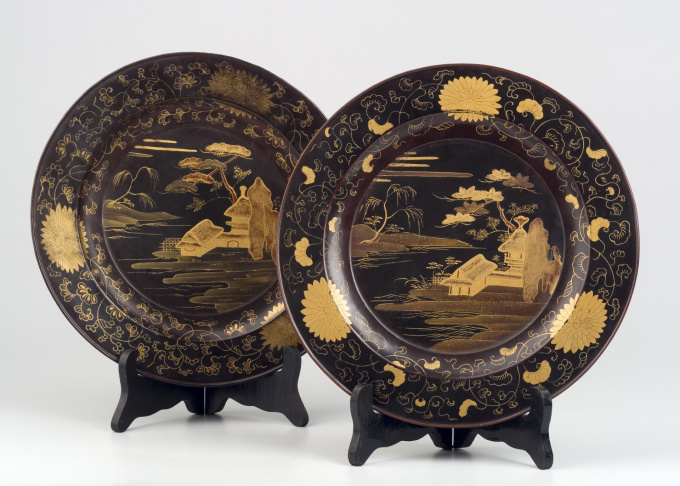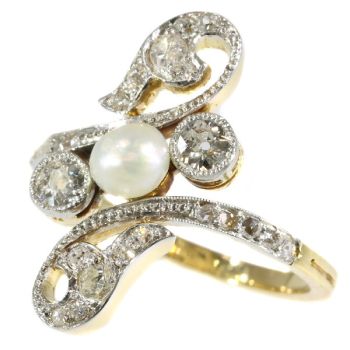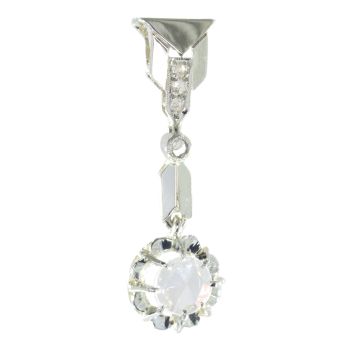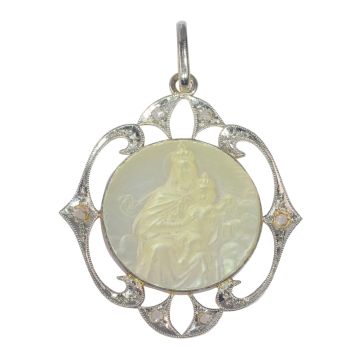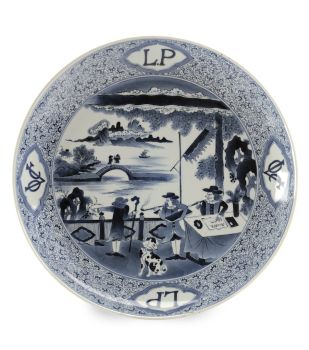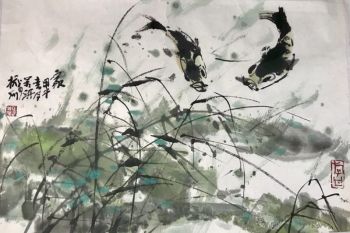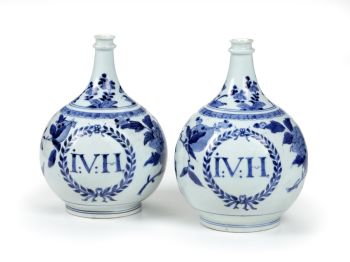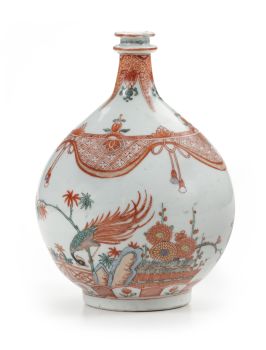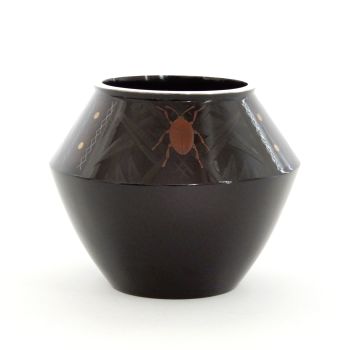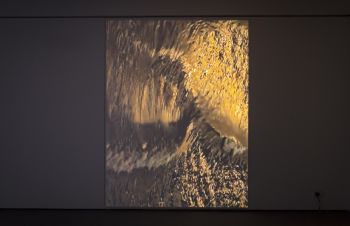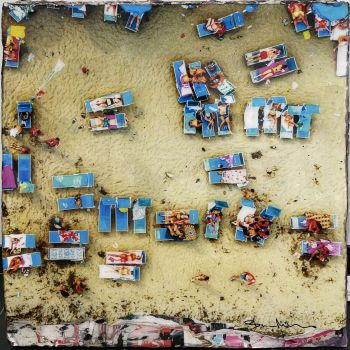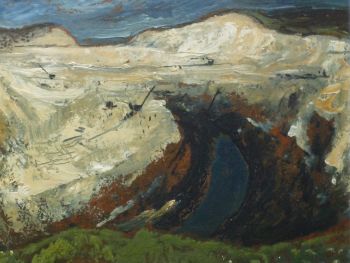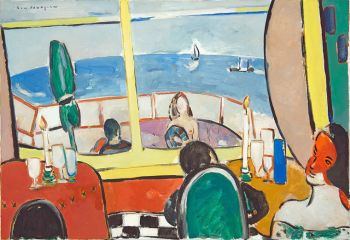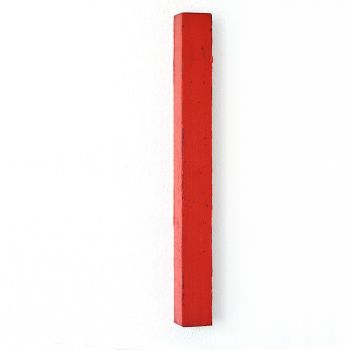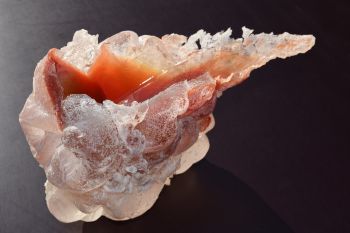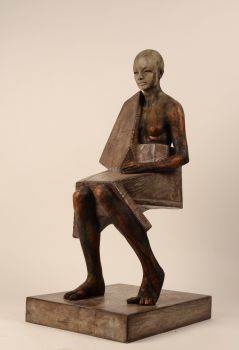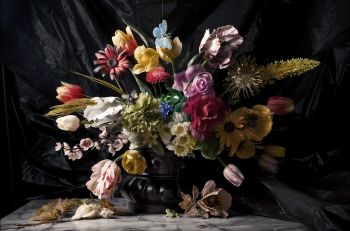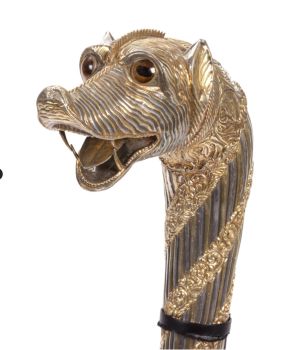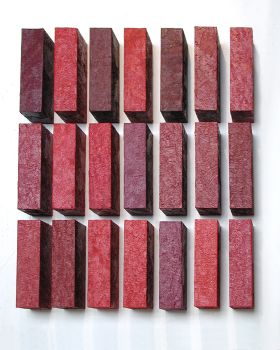Pair of Japanese Lacquered Plates 1700 - 1710
Artiste Inconnu
BoisLaque
ø 27 cm
Actuellement indisponible via Gallerease
- Sur l'oeuvre d'artThese plates probably were part of a laquer service of the kind that was made to order in the early 18th century for the European market.
The shape of the plate with the typical low wide rim with a slightly raise edge is derived from the model of a Dutch pewter diner plate.
The decoration of the center plane is slightly tactile (Maki-technique) en depicts an Oriental landscape with buildings and trees.
The decoration of the rim consists of ‘Karakusa-motives’ and stylized Chrysanthemums (Kiku-motive). The difference in the lacquer of the two plates is remarkable and suggests the work of different artists, both with their own interpretation of the motives.
After the large commissions for lacquer furniture by the Dutch in the 17th century the interest for these large objects faded, arguably due to the high cost. The interest for lacquer artifacts, however, continued but it shifted to objects like plates, bowls, mugs, teapots and coffeepots. Because of the ample demand for tableware from 1700 onwards, the artists turned to ‘serial production’ of these types of objects for foreign markets. Tableware was typically decorated with similar decorations. The decorations were akin to the “Pictorial style” of the late 17th century, though simpler and, until about 1785, always with Oriental motives.
This Japanese lacquer tableware competed in the highest segments of the European market with porcelain. The Oriental lacquer objects were seen as the more rare and desirable, thus enhancing the status of the owner.
The motives:
When the demand for lacquer tableware increased in the early 18th century the artists based their decorations mainly on designs found on Arita porcelain; Landscapes with houses and trees, flowery sprigs (Karakusa) and flowermotives like Chrysanthemum (Kiku).
The technique:
Sometimes copper was used as base for lacquer work, like in plaques, but wood was most commonly used to work with. For furniture Hinoki (Cypress) and sometimes Sugi (Cryptomeria Japonica) was the usual choice. Turned wooden objects like plates and bowls were commonly made of Kaeki (Zelkova serrate, a type of elm), because it can be made very thin and light. A Kaeki bowl before it is lacquered weighs no more than 8 grams. The objects are varnished with many coats of the concentrated resin of the varnish tree (Rhus verniciflua). After every coat of varnish the object is dried in a dust free room with a humidity of more than 80% and subsequently polished.
Relief is achieved by mixing lime into the first layers of varnish on those places that need to be raised. The color is provided by pigments. The technique were gold dust or foil is applied to the still wet lacquer is called Makie. The gold more or less sinks into the layer of lacquer and is polished once the object has dried. The work is finished with a transparent coat of varnish that again is polished to a shine. To emphasize the gold decorations, they were applied to hiramakie (bas relief) and even to takamakie (raised relief). For the Dutch export market the decorations were mainly applied to black backgrounds.
The “Pictorial style” in Japanese lacquer work is applied from roughly 1630 onwards. Starting from about 1650 the style develops; the double edged cartouches surrounding the depictions gradually disappear. Around 1680 the style has matured to the point, where the images appear unframed on the objects. Most of these objects are made in Makie technique with gold on black. - Sur l'artiste
Il peut arriver qu'un artiste ou un créateur soit inconnu.
Certaines œuvres ne doivent pas être déterminées par qui elles sont faites ou elles sont faites par (un groupe d') artisans. Les exemples sont des statues de l'Antiquité, des meubles, des miroirs ou des signatures qui ne sont pas claires ou lisibles, mais aussi certaines œuvres ne sont pas signées du tout.
Vous pouvez également trouver la description suivante :
•"Attribué à …." A leur avis probablement une oeuvre de l'artiste, au moins en partie
•« Atelier de …. ou « Atelier de » À leur avis, une œuvre exécutée dans l'atelier ou l'atelier de l'artiste, éventuellement sous sa direction
•« Cercle de… ». A leur avis une oeuvre de la période de l'artiste témoignant de son influence, étroitement associée à l'artiste mais pas forcément son élève
•« Style de … ». ou "Suiveur de ...." Selon eux, une œuvre exécutée dans le style de l'artiste mais pas nécessairement par un élève ; peut être contemporain ou presque contemporain
•« Manière de… ». A leur avis une oeuvre dans le style de l'artiste mais d'une date plus tardive
•"Après …." A leur avis une copie (quelle qu'en soit la date) d'une oeuvre de l'artiste
•« Signé… », « Daté… ». ou « Inscrit » À leur avis, l'œuvre a été signée/datée/inscrite par l'artiste. L'ajout d'un point d'interrogation indique un élément de doute
• "Avec signature ….", "Avec date ….", "Avec inscription …." ou "Porte signature/date/inscription" à leur avis la signature/date/inscription a été ajoutée par quelqu'un d'autre que l'artiste
Artwork details
Related artworks
Artiste Inconnu
An Amazon Indigenous Kayapo feather headdress1950 - 1960
Prix sur demandeZebregs & Röell - Fine Art - Antiques
1 - 4 / 12- 1 - 4 / 6
Artiste Inconnu
Japanese art deco lacquervase with Scarab beetle motif1920 - 1950
Prix sur demandeDille Art
Artiste Inconnu
An Amazon Indigenous Kayapo feather headdress1950 - 1960
Prix sur demandeZebregs & Röell - Fine Art - Antiques
1 - 4 / 24Artiste Inconnu
UN RARE GRAND TÉLESCOPE EN CUIR LAQUÉ JAPONAIS1750 - 1800
Prix sur demandeZebregs & Röell - Fine Art - Antiques
Bernardus Johannes Blommers
SPELENDE VISSERSKINDEREN1845 - 1914
Prix sur demandeGalerie Het Noorderlicht
Jean-François Rauzier
Balade d'Amsterdam 4 - Limited edition of 22015 - 2024
Prix sur demandeVilla del Arte Galleries
1 - 4 / 24Artiste Inconnu
An Indian part-gilt silver-clad ceremonial sceptre or mace with a tiger’s head1850 - 1900
Prix sur demandeZebregs & Röell - Fine Art - Antiques
 Sélectionné par
Sélectionné parDanny Bree
1 - 4 / 24

